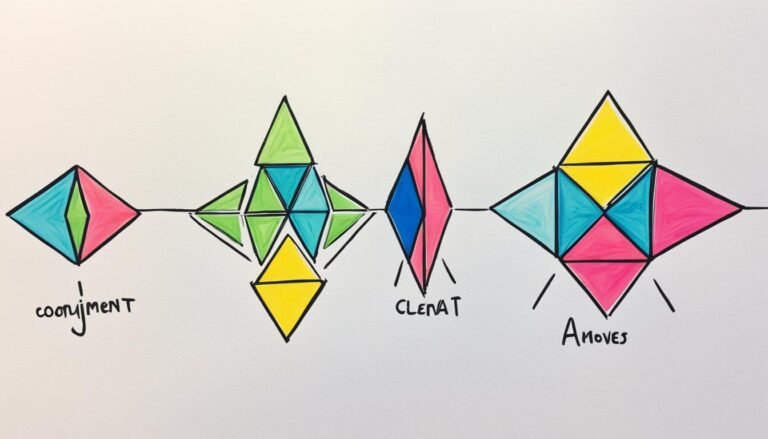Embracing Impermanence: Finding Freedom in Accepting Life’s Ebb and Flow
“The only way to make sense out of change is to plunge into it, move with it, and join the dance.” – Alan Watts
This article is about learning to embrace impermanence. It focuses on how doing so can bring more freedom and peace into our lives. Life is always changing, much like the ocean’s tides. Understanding and accepting this change is key to our happiness.
Acceptance is critical in embracing impermanence. It helps us let go of what doesn’t help us anymore. This makes space for new things and growth. With acceptance, life’s unpredictabilities become easier to handle. We can then move with life’s flow.
Staying in the present moment is also vital. It stops us from worrying about the past or future. By being present, we can fully enjoy the beauty of every moment. We learn to value these moments even if they don’t last forever.
Mindfulness and nonattachment are important in this journey. Mindfulness means watching our thoughts and feelings without being critical. It helps us stay focused on the present. Nonattachment is about not holding onto expectations or possessions too tightly. By letting go of these, we can handle life’s changes more calmly.
In this article, we’re exploring acceptance, impermanence, staying present, letting go, and detachment. These topics show us how embracing impermanence can give us more freedom and peace. This way, we can lead a more genuine, fulfilling life.
Key Takeaways:
- Embracing impermanence leads to greater freedom and serenity in life.
- Acceptance is essential in embracing the inevitability of change.
- Being present allows us to fully engage with the beauty of each passing moment.
- Mindfulness and nonattachment help us navigate life’s changes with equanimity.
- Letting go of attachments liberates us from the need for permanence.
The Nature of Impermanence
Embracing impermanence is key to find inner peace. Impermanence means everything changes over time. Life is always moving; there’s nothing that stays the same forever.
Transience is the fact that nothing lasts. It teaches us that life’s moments are brief. This insight shows us that change is a normal part of life.
Change can be hard, but it can also free us. It’s tough to accept that things won’t stay as they are. But, this realization brings chances for growth and new starts. Letting go of the idea that things should always be the same helps us see life’s beauty.
The Wisdom of Impermanence
“Impermanence is the very essence of life. It reminds us to seize the present moment and cherish the relationships, experiences, and opportunities that come our way.” – Thich Nhat Hanh
Impermanence tells us to live fully now. Knowing everything changes, we can’t help but treasure what we have. It highlights the value of living fully in each moment.
Dealing with change wisely lifts us up. It’s a relief not to worry about what was or could be. This wisdom lets us go with the flow. We find peace, learning to handle change with grace.
Cultivating Acceptance
Acceptance is key to dealing with life’s changes and finding peace. By learning to accept what is, we can move through life easily. This includes letting go of control and resisting the need to change everything.
The Importance of Acceptance
Accepting life’s changes helps us feel more peaceful. It’s not about giving up, but understanding life moves all the time. When we fight against change, life becomes hard. But, if we accept it, we can find calm, no matter what happens.
Letting Go of Resistance
We need to let go of trying to control everything to truly accept life. If we always want things to go a certain way, we’ll just be let down. By being open to how things turn out, we’ll be happier and more at peace.
Letting go shows we’re strong, not weak. It helps us grow and become better. So, by turning this letting go into a habit, we make room for positive changes.
“Acceptance does not mean that you deny the reality of a challenging situation. It simply means that you acknowledge it and choose not to let it define you. Embracing impermanence means embracing the beauty of life’s ever-changing nature.” – Unknown
Embracing What Is
To be at peace with life’s changes, we must first embrace the present. When we wish things were different, we lose the beauty of now. By accepting today, we connect with the good around us and feel deeper joy.
Next, let’s look into how being present connects to accepting change. Being present helps us see the good in what’s happening now. It lets us understand and appreciate life’s changes.
The Power of Presence
Embracing the idea that nothing lasts forever, we find great strength through being present. This means living fully in the moment, ditching worries of the past and future. When we focus on now, we discover life’s true essence and gain deep peace.
Acting in the present lets us really take in what’s happening and who’s around us. We become better listeners and observers, forging deeper connections. This stops us from dwelling on the past or worrying about the future, helping us enjoy each moment.
Now, take a big breath. Feel the air fill your lungs and your chest lift. Look around and take in all the sights, sounds, and scents. This anchors us in the present and lets us fully experience our surroundings.
Mindfulness is all about living in the now. It means paying attention to our thoughts, feelings, and body without being hard on ourselves. This boosts our self-awareness and helps us tackle life’s hurdles gracefully.
“Holding space for presence allows us to let go of the past and step into the flow of the present, where true growth and transformation occur.”
Practices like meditation, focused breathing, and body scans train our minds to stay present. They teach us to gently return to the current moment when our thoughts drift off.
With presence, we accept that life is always changing. We find freedom in letting go of our tight hold on what we can’t control. That way, we face change with a heart more open and ready.
Being present doesn’t mean having a perfect mind. It means realizing that every instant is full of its unique charm and wisdom. Choosing presence enriches our lives and opens us to new opportunities.
Let presence guide you as you get used to life’s constant shifts. By practicing mindfulness and staying self-aware, you’ll experience deep peace and connection with yourself and the world.
Nonattachment is key to accept impermanence. It means letting go of our desires and the need to control. By not holding on, we can move through life’s changes smoothly.
Equanimity helps us stay calm despite life’s ups and downs. It means keeping a steady mind when things don’t go our way. This skill lets us face changes with a clear head.
Pairing nonattachment with equanimity opens paths to growth and connection. We leave behind yearning and embrace the present moment. This mindset helps us see the beauty in each moment.
These qualities don’t make us disconnected. They actually grant us a deeper engagement with life. They help us find peace while fully living.
Developing nonattachment and equanimity demands effort and awareness. We must catch ourselves clinging and resisting change. With this insight, we can choose to let go and welcome what comes.
The Practice of Nonattachment:
- Release expectations and let go of the need for control.
- Cultivate gratitude for what is present in your life.
- Recognize impermanence and embrace change as an opportunity for growth.
- Practice mindfulness to stay present and observe attachments without judgment.
The Cultivation of Equanimity:
- Develop self-awareness and notice patterns of reactivity.
- Cultivate compassion and empathy towards yourself and others.
- Practice acceptance and surrender to the present moment.
- Cultivate a sense of interconnectedness and interdependence.
Combining these practices changes how we experience life. We learn to live in the now with freedom and peace. This brings us closer to both ourselves and those around us.
Letting Go of Attachments
Learning to let go of attachments is key on our path to understand life’s impermanence. We often get attached to things like what we own, who we know, even who we think we are. These attachments feel safe, but they stop us from seeing the beauty in change.
Letting go frees us from clinging to what we think makes us happy or whole. It helps us see that nothing stays the same forever. And it makes room for new chances and personal growth by letting us understand the freedom in life’s twists and turns.
“Attachment is the great fabricator of illusions; reality can be obtained only by someone who is detached.” – Simone Weil
To let go is to choose not to need things to stay the same. It means giving up control and going with life’s flow. Without holding too tight to people or things, we welcome whatever comes next and the surprises life may bring.
Nonattachment changes how we view the world. Rather than hold on, we cherish the moment while knowing things will change. It’s about enjoying things for what they are, but also knowing we can let them go when needed.
To fully let go, we must look within and be honest with ourselves. We need to understand why we hold on so tightly. Realizing nothing lasts can help us break free from the worry and stress of losing what we love.
Understanding life’s impermanence helps us value each moment. It lets us flow with life, finding comfort in its natural changes and enjoying the journey. By releasing attachments, we invite new joys and lessons that make our lives fuller and richer.
Embracing Change
Change is always happening around us. It constantly shapes our lives. We often resist it because we like things the way they are. But what if we welcomed change instead of fearing it?
Allowing impermanence can change our lives for the better. It lets us see change as a chance to improve and learn. This mindset opens the door to new paths and experiences.
Reflecting on how you feel about change is a good start. Do you avoid it because it scares you? Knowing it can lead to good things helps. Change is key to finding who we are.
Acceptance is also crucial in facing change. Realize that change is part of life. Fighting against it only makes us unhappy. Letting go and flowing with change can bring peace.
When we welcome change, we face the unknown with bravery and excitement. Letting go of control and diving into new chances is freeing. It helps us not to get stuck but to grow.
“Change is the only constant in life.” – Heraclitus
Opening yourself up to change means being brave and ready to leave the old behind. Though hard, accepting change shows us new ways and brings happiness. It’s how we become our best.
So, don’t fear change. Welcome it, as it leads to new adventures and growth. Changing your view on change can change your life.
Finding Serenity in Transience
Life’s fleeting nature can make us feel anxious and unsure. But in this fleeting state, we can also find deep peace. Instead of fighting life’s quick changes, we can find joy in its short, beautiful moments.
Embracing impermanence helps us give up on controlling everything and understand life’s constant changes. By valuing every moment, we learn to appreciate life’s shortness more.
Think of a bright autumn leaf falling from a tree. It shows us how to enjoy the brief, stunning sights around us and feel at peace in those moments.
In the words of the poet Matsuo Basho:
“Barn’s burnt down –
now
I can see the moon.”
-Matsuo Basho
Basho’s haiku captures the idea of finding peace in short-lived things. When we face loss or change, new ways of seeing and feeling can emerge. This helps us let go of the past and worries about the future. Then, we can truly enjoy the present and its fleeting beauty.
Being thankful and accepting brings us peace. Each moment is a chance to fully live and experience the world’s fluid changes. Embracing impermanence leads us to a deeper peace and balance.
So, as we journey through life’s quick changes, let’s embrace these changes. Let’s find peace in the brief moments and see the deep beauty they hold.
Living Mindfully
Mindfulness is a powerful practice. It helps us embrace change and live life to the fullest. This method involves being present and aware.
We learn to connect deeply with ourselves and with our surroundings. Mindfulness means watching our thoughts and feelings with an open heart. It’s not about avoiding reality or controlling our emotions.
Living mindfully brings openness and curiosity to our days. We notice and enjoy the present moment’s beauty and richness. This approach fosters gratitude for each moment, no matter how short.
Mindfulness shines a light on the fleeting nature of life. It helps us let go of the need for things to stay the same. By living this way, we truly understand and accept the impermanence of everything around us.
Mindfulness is built through practices like meditation and breathing exercises. These activities deepen our connection to the present. They help us understand our thoughts and feelings better.
Practicing mindfulness means being fully present, without judgment, in each moment. This approach helps us accept life’s changes and find peace.
As life goes up and down, mindfulness acts as a steady guide. It helps us bounce back from challenges. Through these practices, we uncover our strength and wisdom. This leads to greater happiness and satisfaction.
Mindfulness and accepting change walk hand in hand. This way of living encourages us to be present and open. It lets us leave the past and the future’s worries behind. By living in the moment, we find liberty, peace, and a deep connection to the world and ourselves.
Embracing Impermanence in Relationships
Relationships are a wonderful part of life. They show us that change is constant. By understanding this, we make our bonds stronger and real.
Learning to let go is crucial in relationships. We often cling to how we want things to be. But life keeps changing. By letting things flow, we allow for growth and deep insights.
Letting go of control doesn’t lessen the worth of a relationship. It’s like how a river moves – always changing its path. Welcoming this change lifts the pressure of expectations. It brings us closer to the beauty of each moment.
“True love is precisely the love that lets go. Certainty is ‘forever’ love, and real love embraces impermanence.”
Acceptance is key to dealing with change in relationships. We understand everyone evolves. Paths might not always run together. Instead of holding onto the past, we honor our present connections.
Mindfulness is vital in relationships. It’s about being with someone wholeheartedly. This involves listening without distractions and truly appreciating the person in front of us.
Let’s think about how relationships, just like life, are temporary. Yet, their beauty remains. Realizing this helps us cherish every shared moment without fear of what might change next.
Nurturing Equanimity in the Face of Impermanence
Life always changes. But staying calm can help us feel balanced. Equanimity is about gracefully dealing with life’s ups and downs. Let’s look at how to find peace in this change.
Mindfulness is key to finding this calm. It means being fully in the moment. This acceptance lets us not get lost in life’s twists and turns. Mindfulness shows us how to be patient and kind, even when things change.
“Equanimity is not about suppressing or denying emotions but rather developing an accepting and nonreactive attitude towards them,” says mindfulness expert, Jon Kabat-Zinn.
Life throws us curveballs, making it hard to stay stable. But we must remember, change is normal for everyone. Wishing things would stay the same only brings pain. When we accept this, we can go with life’s flow and be at peace.
Cultivating Equanimity through Self-Reflection
Looking into our own minds can be a big help. It gives us a deeper understanding of ourselves and makes us stronger. This self-awareness can free us from the things that hold us back.
- Journaling: Writing helps us see why we react certain ways to change. It points out our thoughts and beliefs. This lets us find a more even viewpoint.
- Meditation: Regular meditation can make us more balanced. It teaches us to let thoughts pass without judgment. This helps us be more accepting.
- Seeking support: Talking with friends, family, or therapists can show us a new outlook. Their advice can be really helpful in tough times.
Finding peace in change takes time. But with a kind and patient heart, it is possible. By welcoming change and staying calm, we can enjoy life’s flow. Understanding and accepting change is key to living fully.
Conclusion
Embracing impermanence can change our lives for the better. It’s about letting go of control and accepting change. This leads to finding peace now.
It helps us understand that everything changes. This understanding lets us build a calm attitude. We start to grow and see new opportunities in our relationships.
Let’s welcome change with open arms. This way, we can enjoy life even when it shifts. By accepting impermanence, we learn to live more deeply and fully.








